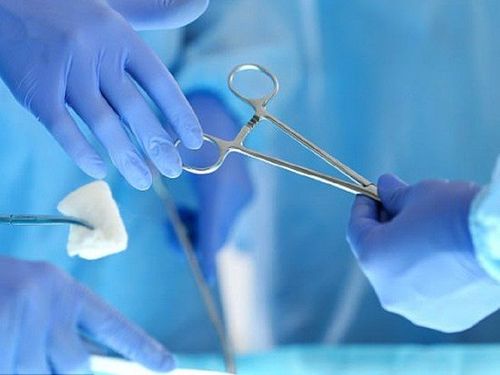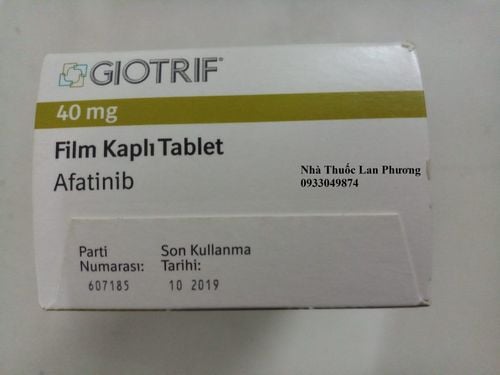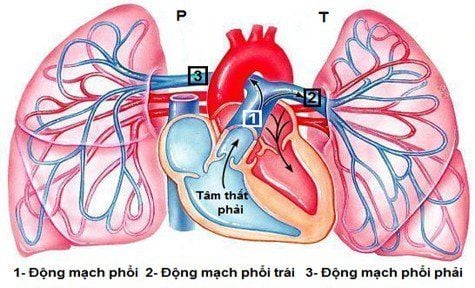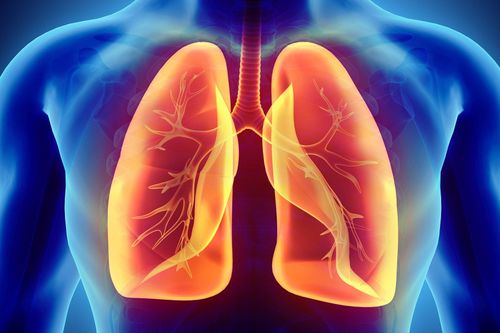This is an automatically translated article.
Lung biopsies can be performed either closed or open. The closed method is to perform the technique through the skin or through the trachea. Open biopsies are performed in the operating room, after the patient has been anesthetized.1. What is a lung biopsy?
A biopsy is a process in which a sample of tissue or cells is removed from the body for examination under a microscope. A lung biopsy is the process of taking a sample from lung tissue (with a special biopsy needle or during surgery) to check for disease in the lungs, and for the existence of cancer.Lung biopsy can be done by closed method or open method. The closed method is to perform the technique through the skin or through the trachea. Open biopsies are performed in the operating room, after the patient has been anesthetized.
2. Lung biopsy tests
Lung biopsy has many different techniques, including:Needle biopsy : After local anesthesia, the doctor will insert the biopsy needle through the chest wall under the guidance of computed tomography or X - TV light, enter the suspected lesion to take a tissue sample. This biopsy technique is also called a closed transthoracic biopsy. Transbronchial Biopsy: This biopsy technique is performed during bronchoscopy (through the bronchoscope). Thoracoscopy Biopsy: After the patient is anesthetized, an endoscope will be inserted through the chest wall into the mediastinum, different biopsy instruments will be used to take a sample of lung tissue through the endoscope. this. Open biopsy: After anesthesia, the doctor will conduct surgery to open the patient's chest to take a sample of lung tissue. Based on the biopsy results, the doctor may decide to proceed with further interventions, such as a lobectomy. An open lung biopsy is essentially a surgical procedure, and therefore requires a hospital stay.

Sinh thiết phổi mở về thực chất là một quá trình phẫu thuật, và do đó bệnh nhân cần nằm viện
3. Why perform a lung biopsy?
Lung biopsies may be performed for a number of reasons:To evaluate abnormalities that appear on X-ray or computed tomography scans. For the diagnosis of pneumonia in the lungs and other lung diseases. To find out the cause of pleural effusion of unknown cause. To determine whether an abnormal mass in the lung is malignant or benign. To determine the stage of melanoma. Which method of lung biopsy is performed will depend on many factors, such as the type of pathology suspected, the location of the lesion, the patient's general condition,...
4. Possible risks during lung biopsy
An open lung biopsy or thoracoscopic biopsy is essentially a surgical procedure performed under anesthesia. Like any other surgery, complications can occur. Some possible complications (but are not limited to these) include:Blood loss Blood clot Pain or discomfort Infection Pneumonia Needle lung biopsy or transbronchial biopsy done after when lightly sedating the patient or giving local anesthesia. Some possible complications (but are not limited to these) include:
Pneumothorax: When air enters and gets trapped in the pleural cavity, compresses the lung parenchyma, causing lung collapse. Bleeding in the lungs Infection If you are pregnant, or suspect you are pregnant, inform your doctor in advance.
5. Before conducting a lung biopsy
The doctor will explain to the patient about the technical procedure to be performed (what is a lung biopsy, why a lung biopsy is needed, the risks that may be encountered when performing a lung biopsy, the preparation before the biopsy. , biopsies, and post-biopsy care). The doctor will answer and advise all questions and concerns of the patient. The patient needs to sign an agreement to perform the technical procedure. The doctor can re-examine the patient, order tests and paraclinical techniques to ensure that the patient's condition meets the requirements before performing the biopsy. If the patient is pregnant or suspected to be pregnant, notify the doctor. Inform your doctor if you are sensitive or allergic to drugs, latex, iodine, adhesive tape, or anesthetic agents (topical or systemic). Inform your doctor about any medications or supplements you are using. Tell your doctor if you have a history of blood clotting disorders or are taking anticoagulants, so that your doctor can make a decision about these medications. Depending on the specific situation of each patient, the doctor may make other specific requirements.6. After performing a lung biopsy

Sau khi tiến hành sinh thiết phổi, nếu bệnh nhân cảm thấy khó thở hãy liên hệ ngay với bác sĩ
The doctor may also ask the patient to avoid vigorous activity for several days after the biopsy.
If any of the following signs appear, notify your doctor immediately:
Shortness of breath Chest pain Pain when breathing Coughing up blood Fever and/or chills Biopsy site swelling, redness, or bleeding, bleeding abnormal translation. Should choose a lung biopsy, it is best to choose large and reputable medical facilities not only in the general hospital system but also stand out, leading in the field of lung cancer diagnosis and treatment.
For detailed advice on lung biopsy techniques at Vinmec, you can go directly to Vinmec medical system nationwide or contact to book an online examination HERE.
MORE:
What tests are done in the diagnosis of lung cancer? Can lung cancer be diagnosed at an early stage? Why is lung cancer screening necessary?













